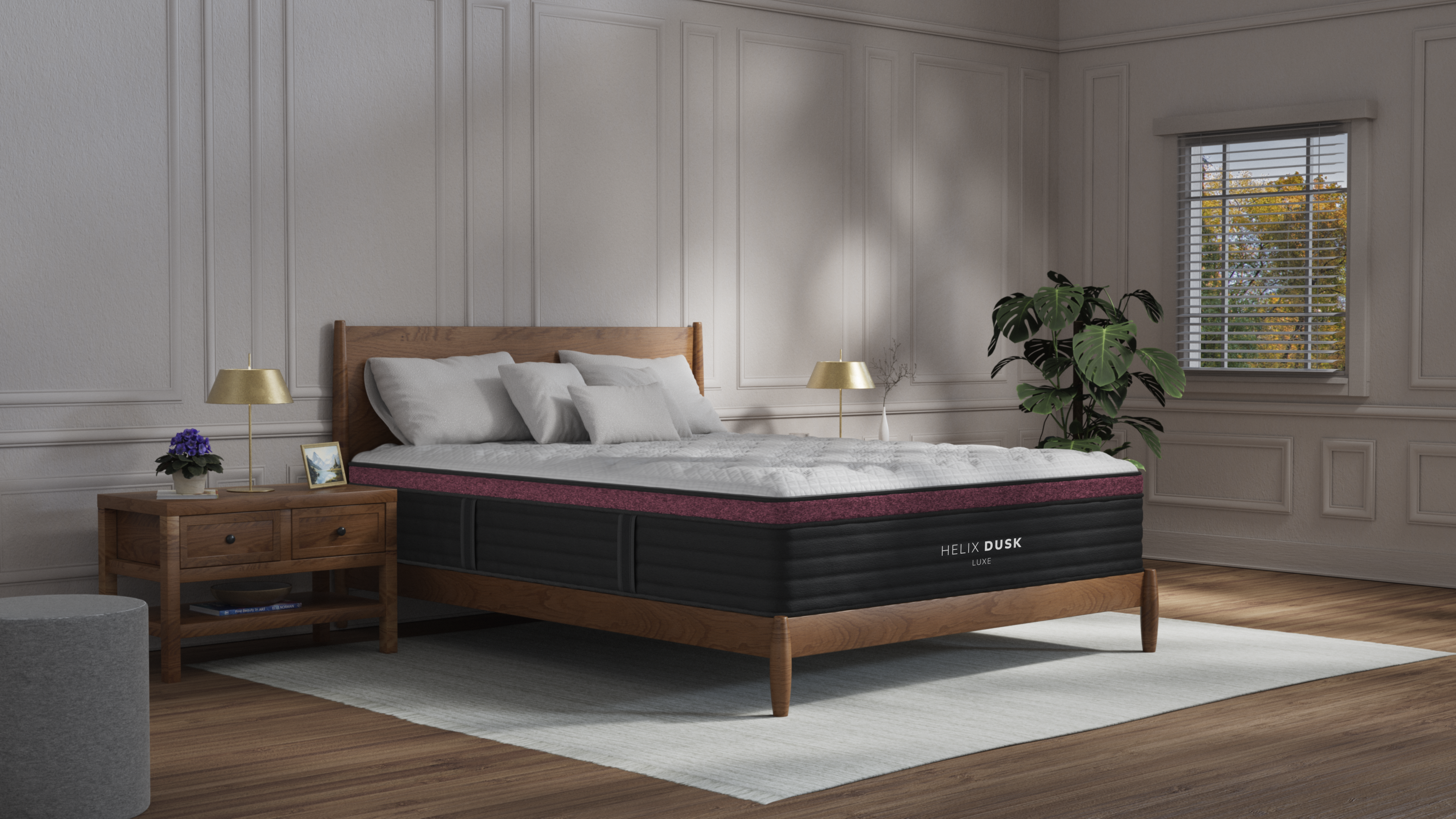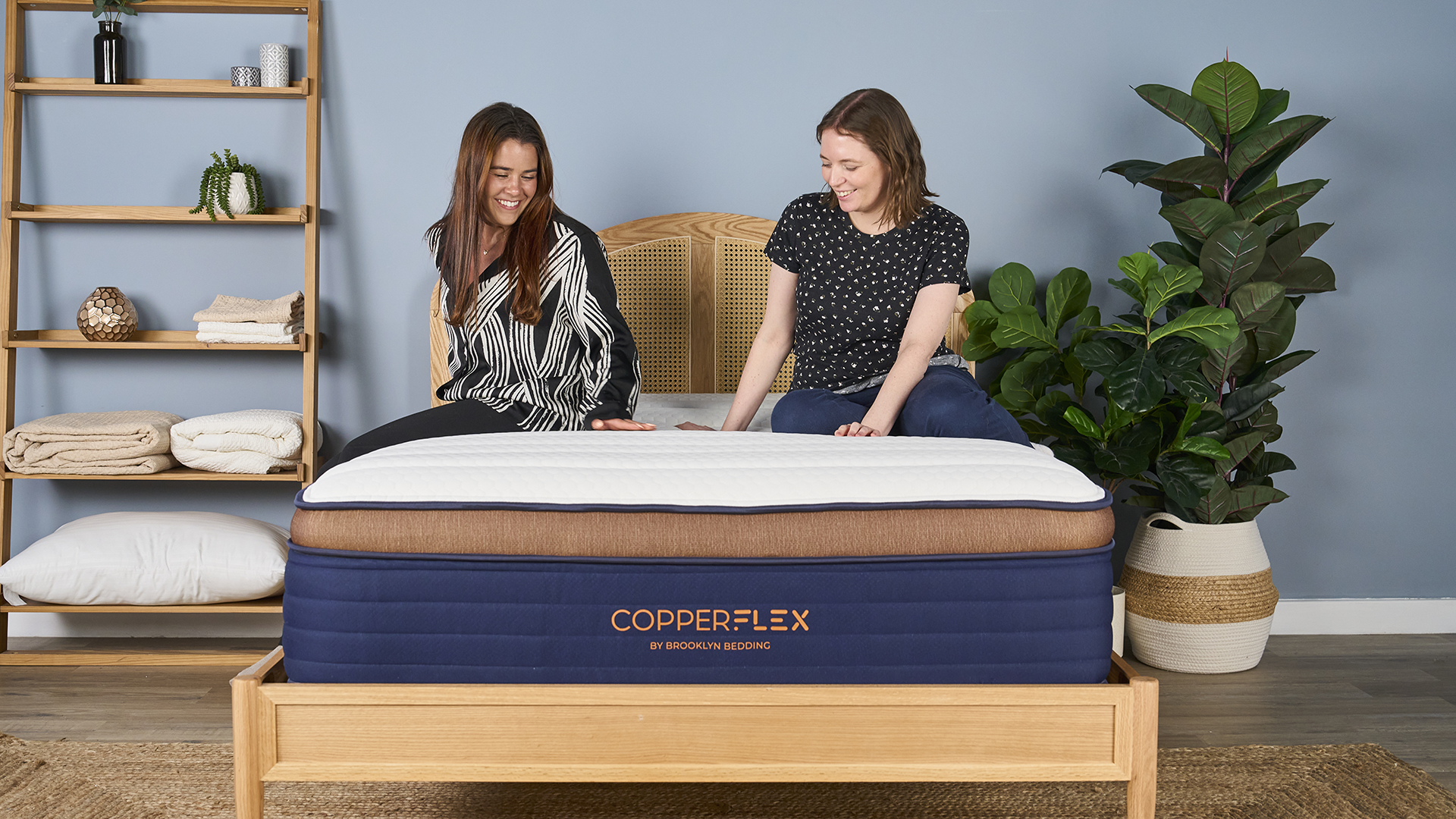What are Phase Change Material and GlacioTex cooling mattress fabrics and how do they work?
Each is designed to regulate your temperature through the night, but beyond that these technologies work in different ways

You're most likely to come across Phase Change Material (PCM) and GlacioTex when you're shopping for a cooling mattress, and in some instances luxury cooling bedding, toppers and pillows.
On the surface both PCM and GlacioTex serve the same purpose: to keep you at an ideal temperature while you sleep by wicking away excess heat. But when you dig into the science behind these cooling material technologies, there are some differences that could affect your quality of sleep.
Here's what you need to know about PCM vs GlacioTex, how each works, and what their benefits and drawbacks are for different types of sleeper.
Key differences
Phase Change Material
- Made from materials that absorb and release heat as they change state
- Suits sleepers whose temperature fluctuates
- Usually come with cushioning
GlacioTex
- High thermal conductivity fibers draw heat away from body
- Add a protective hypoallergenic layer
- Can be slippery
What is Phase Change Material?
Phase Change Material (PCM) is a substance that helps regulate your sleep temperature by acting as an in-bed heat reservoir. In mattresses, PCM tends to be in wax or gel form. The particles are coated with a protective shell and embedded in foams and fabrics without leaking.
PCM adsorbs and releases heat as its particles change from a solid to a liquid state. When the particles change from solid to liquid, they absorb heat and then they solidify when this stored heat is released.
PCMs are often embedded in comfort foams or woven into mattress covers. These materials can be found in many of our top-rated cooling mattresses including the Bear Elite Hybrid mattress, the Brooklyn Bedding Aurora Luxe mattress, and the Tempur-Pedic Tempur-Breeze mattress.
The benefits of Phase Change Material
PCM is a versatile material that can be incorporated into various components including foam layers and fabric covers without major manufacturing hassle.
Get instant access to breaking news, the hottest reviews, great deals and helpful tips.
These materials offer active temperature balancing as they adjust state according to your body temperature changes through the night. This means they can both absorb heat (drawing it away from the body) and release heat (warming up the body).

A study assessing mattresses with PCM using a thermal and perception test showed mattresses composed of PCMs better facilitate human heat dissipation and result in a cooler perception and greater thermal comfort compared to conventional mattresses after 20 minutes of use.
The drawbacks of Phase Change Material
A downfall of this material is it has a limited heat-absorbing capacity. This means, once it is fully liquefied, it cannot absorb excess heat, reducing its cooling effect.
While there is some scientific data backing PCM in mattresses, as referenced above, research is limited at this point.
A mattress that uses PCM may suit you if…
✅ Your body temperature fluctuates through the night: PCMs offer dynamic temperature regulation, meaning they actively adsorb and release heat to maintain a neutral sleeping temperature, which is useful for people who sleep hot or cold at different points of the night.
✅ You want dynamic climate control without tech: Temperature regulating smart beds digitally heat up and cool down, whereas PCM regulate temperature naturally, meaning you can keep your sleep space phone and subscription-free.
✅ You like a cushioning sleep surface: PCM are usually used in foams, adding pressure relief and cushioning for those with achy joints or side sleepers with a lighter built.
What is GlacioTex?
GlacioTex is a fabric made of fibers with high thermal conductivity that quickly and effectively pull heat away from your body while you sleep, keeping you and your sleep surface cool through the night.
These fibers are also hypoallergenic and waterproof, providing a stain and bug-resistant barrier over your mattress.
Some of our favorite best mattresses of the year come with GlacioTex covers. These include the new-and-improved Helix Elite mattress collection and the Brooklyn Bedding CopperFlex Pro Hybrid mattress.
The benefits of GlacioTex
GlacioTex has a lot going for it. It's designed to be cool to touch and hypoallergenic while adding pressure relief to mattresses.
When woven into mattress covers, GlacioTex provides a cool sleep surface, helping your body temperature drop in line with your circadian rhythm when you get into bed.
Thanks to its protective nature and contribution to pressure relief, you'll come across GlacioTex in top-rated mattress protectors and mattress toppers too as it repels allergens and makes your bed softer, providing more cushioning on joints.

The drawbacks of GlacioTex
A commonly reported drawback of GlacioTex mattress covers is the fact they can have a slippery texture causing a fitted sheet to shift or pop off when you sleep on it, which can be irritating through the night disrupting quality sleep.
GlacioTex covers don't tend to be removeable. Even though they provide a waterproof, hypoallergenic barrier, they cannot be removed and put through the washing machine. This means they lack points in terms of mattress cleaning practicality.
While GlacioTex toppers offer a cooling sensation, they may not be firm enough for all sleeping positions. Some users who prefer a firmer mattress might find them too soft
A mattress using GlacioTex may suit you if…
✅ You’re a seriously hot sleeper: GlacioTex continues to absorb heat through the night without a limit, which is better than PCM for significantly hot sleepers who struggle with night sweats.
✅ You suffer with allergies: GlacioTex covers add an allergen-repellent protective layer to your mattress which is particularly useful if you find yourself sneezing and coughing through the night.
✅ You bedshare with little ones: GlacioTex covers offer waterproof protection and spills and stains.
PCM vs GlacioTex: Which is more effective in a cooling mattress?
Both PCM and GlacioTex are effective at wicking away heat at night. However, each has its own strengths. GlacioTex is arguably more effective for super hot sleepers as there is no limit to how much heat it can draw away from the body.
Meanwhile, PCM is better suited to those whose temperature fluctuates as it can absorb heat, hold it and release it back to the body once cooled down. This helps you maintain a good temperature for sleeping which experts say lies between 65 to 70 F (18 to 21 °C).
Either way, PCM and GlacioTex can't do all the heat balancing alone. You'll want to make sure they are paired with other cooling technologies and breathable, moisture-wicking materials like wool, individually-wrapped coils and copper-infused foam to help you sleep comfortably.

Eve is a sleep tech product tester and writer at Tom's Guide, covering everything from smart beds and sleep trackers, to sleep earbuds and sunrise alarm clocks. Eve is a PPA-accredited journalist with an MA in Magazine Journalism, and has four years’ experience writing features and news. In her role as Sleep Tech Product Tester and Writer for Tom's Guide, Eve is constantly trying out and reviewing the latest sleep products from brands such as Apple, Garmin, Whoop, Hatch, Sleep Number, Eight Sleep, and Oura. A fitness enthusiast who completed the London Marathon earlier this year, Eve loves exploring the relationship between good sleep, overall health, and physical performance, and how great sleep tech can make that relationship even better.
You must confirm your public display name before commenting
Please logout and then login again, you will then be prompted to enter your display name.
